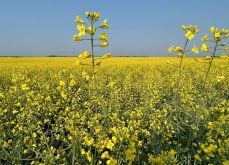Livestock tracking system
CALGARY – The Canadian Cattle Identification Agency has launched a new version of the Canadian Livestock Tracking System named CLTS Lite. The application is designed to provide the same key functions and information to CLTS users as the original system, but without extras that can delay access for rural users with dial-up connections.
The CLTS Lite is stripped of all graphics and logos, allowing for faster experience that enables users to navigate the system quicker.
The CCIA plans to continue to improve the CLTS system.
Read Also

StatCan stands by its model-based crop forecast
Statistics Canada’s model-based production estimates are under scrutiny, but agency says it is confident in the results.
For more information, visit www.canadaid.ca.
Soil Conservation Council honours researcher
An Agriculture Canada researcher has been honoured for his leadership in soil conservation and sustainable agriculture in Canada.
David McAndrew of the Morden Research Centre in Morden, Man., is the newest inductee into the Canadian Conservation Hall of Fame, an award that recognizes Canadians for contributions to soil conservation.
McAndrew helped create three producer directed research farms in 1992 to address soil conservation in Western Canada.
The research farms have demonstrated the benefits of soil conservation practices and have influenced farming practices in Western Canada.
Results on row spacing, seed row openers and crops in zero tillage systems have been used by producers to implement zero tillage as a common cropping practice. The farms have also demonstrated how zero tillage increases on-farm biodiversity and waterfowl production.
McAndrew’s other studies have produced information on landscape reclamation of eroded soils, greenhouse gas emissions and crop protection product residues.
His current research allows for the inclusion of pulse crops and soybeans in diversified cropping systems.
Winter wheat
Farmers planning to grow winter wheat should take care to choose the right spring crops for bigger dividends this fall, says Ducks Unlimited.
As part of spring planning, farmers should aim to have the first fields seeded in the spring to be the fields they plan to seed to winter wheat in autumn, it said.
It is best to choose a spring crop that will have stubble available between Aug. 20 and Sept. 15, for timely seeding of winter wheat. This provides time for the plant to develop a strong and healthy crown before winter.
The other key to winter wheat is winter survival, which depends on plant health and soil temperature. Seeding into stubble that catches adequate snow will insulate the plants. Canola, mustard and cereal stubble are the best choices to precede a winter wheat crop.
Ducks Unlimited Canada offers help with planning decisions.
To help plan a winter wheat crop, visit wintercereals.ca and click on ‘Growing Winter Wheat’ and ‘Tools’ to find the Weatherman-ager, an on-line planning resource that may help plan spring seeding to produce stubble available for seeding in the fall.
















